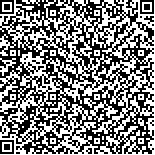| 本文已被:浏览 799次 下载 489次 |

码上扫一扫! |
|
|
| 基于底质类型变化监测的2005—2018年西沙永乐群岛珊瑚礁白化分析 |
|
逄今朝1,2, 任广波2, 施祺3, 朱海天4, 胡亚斌2, 董娟2, 马毅2
|
|
1.中国石油大学(华东), 山东 青岛 266580;2.自然资源部第一海洋研究所, 山东 青岛 266061;3.中国科学院南海海洋研究所, 广东 广州 510301;4.国家卫星海洋应用中心, 北京 100081
|
|
| 摘要: |
| 在海洋环境变化和人类活动的双重影响下,我国珊瑚礁白化现象日趋严重,珊瑚礁健康状况、珊瑚种群数量和丰富度呈逐年下降的趋势。本文基于2005-2007年QuickBird卫星影像、2011-2012年QuickBird/WorldView-2卫星影像和2016-2018年GF-1/2卫星影像等3期高分辨率遥感数据,以西沙永乐群岛羚羊礁、中建岛等14个岛礁为研究区(以下统称永乐群岛),利用支持向量机(support vector machine,SVM)分类方法结合人机交互信息提取方法完成了3期永乐群岛的珊瑚礁底质类型分类,并通过珊瑚礁底质类型变化分析了永乐群岛珊瑚礁白化特征。主要结论包括:(1)提出了一种珊瑚礁白化程度分级的方法,将永乐群岛白化状况分为轻度、中度、重度和严重白化4个等级,通过分析发现在监测时段内14个岛礁中有13个发生了不同程度的白化,其中10个发生了重度白化(白化率20%以上),1个严重白化(羚羊礁,白化率为33.36%);(2)根据监测数据统计,上述珊瑚岛礁的白化主要是由珊瑚丛生区白化引起的,2005-2018年永乐群岛珊瑚丛生区白化面积占总的发生白化区域面积的70.55%;(3)14个岛礁中只有甘泉岛的活珊瑚覆盖在逐渐增加,活珊瑚覆盖面积由2006年5月10日的87.13 hm2增加到2018年3月7日的107.80 hm2。 |
| 关键词: 永乐群岛 珊瑚礁 遥感 白化分析 |
| DOI:10.11759/hykx20200729002 |
| 分类号:TP79 |
| 基金项目:国家自然科学基金项目(51839002);科技基础性工作专项项目“南海中北部珊瑚礁本底调查(2012FY112400)”;海洋领域融合应用示范项目 |
|
| Analysis of coral reef bleaching in Yongle Islands of Xisha from 2005 to 2018 based on sediment types change monitoring |
|
PANG Jin-zhao1,2, REN Guang-bo2, SHI Qi3, ZHU Hai-tian4, HU Ya-bin2, DONG Juan2, MA Yi2
|
|
1.China University of Petroleum, Qingdao 266580, China;2.First Institute of Oceanography, Ministry of Natural Resources, Qingdao 266061, China;3.South China Sea Institute of Oceanology, Chinese Academy of Sciences, Guangzhou 510301, China;4.National Satellite Marine Application Center, Beijing 100081, China
|
| Abstract: |
| In recent decades, under the dual influence of marine environment and human activities, coral bleaching has become a serious concern in China. The number and population richness of coral reefs show a trend of rapid decline. Based on high-resolution remote sensing images of three phases, namely Quickbird satellite (2005-2007), WorldView-2 satellite (2011-2012), and GF-2 satellite (2016-2018), this paper selects 14 reefs, including the Antelope reef and Zhongjian island in Yongle Islands of Xisha as the research area using the Support vector machine (SVM) classification method combined with human-computer interaction information extraction method to complete the three periods of coral reef sediment type classification in Yongle Islands, and then the coral reef bleaching characteristics of Yongle islands were analyzed based on the changes of coral reef sediment types in three periods. The main conclusions are as follows:(1) A method is proposed to classify the bleaching status of Yongle Islands into four grades:mild, moderate, severe, and most severe. According to the analysis, 13 of the 14 islands exhibited different degrees of bleaching during the monitoring period, among which 10 exhibited severe bleaching (with a bleaching rate of over 20%) and 1 exhibited the most severe bleaching (antelope reef, 33.36%). (2) According to the monitoring statistics, the bleaching of the above coral reefs is mainly caused by the bleaching of coral fascicled areas. From 2005 to 2018, the bleaching area of coral fascicled areas accounted for 70.55% of the study area. (3) Among the 14 reefs, only the coral reef of Ganquan island gradually increased from 87.13 hectares on May 10, 2006 to 107.80 hectares on March 7, 2018. |
| Key words: Yongle Islands coral reefs remote sensing bleaching analysis |
